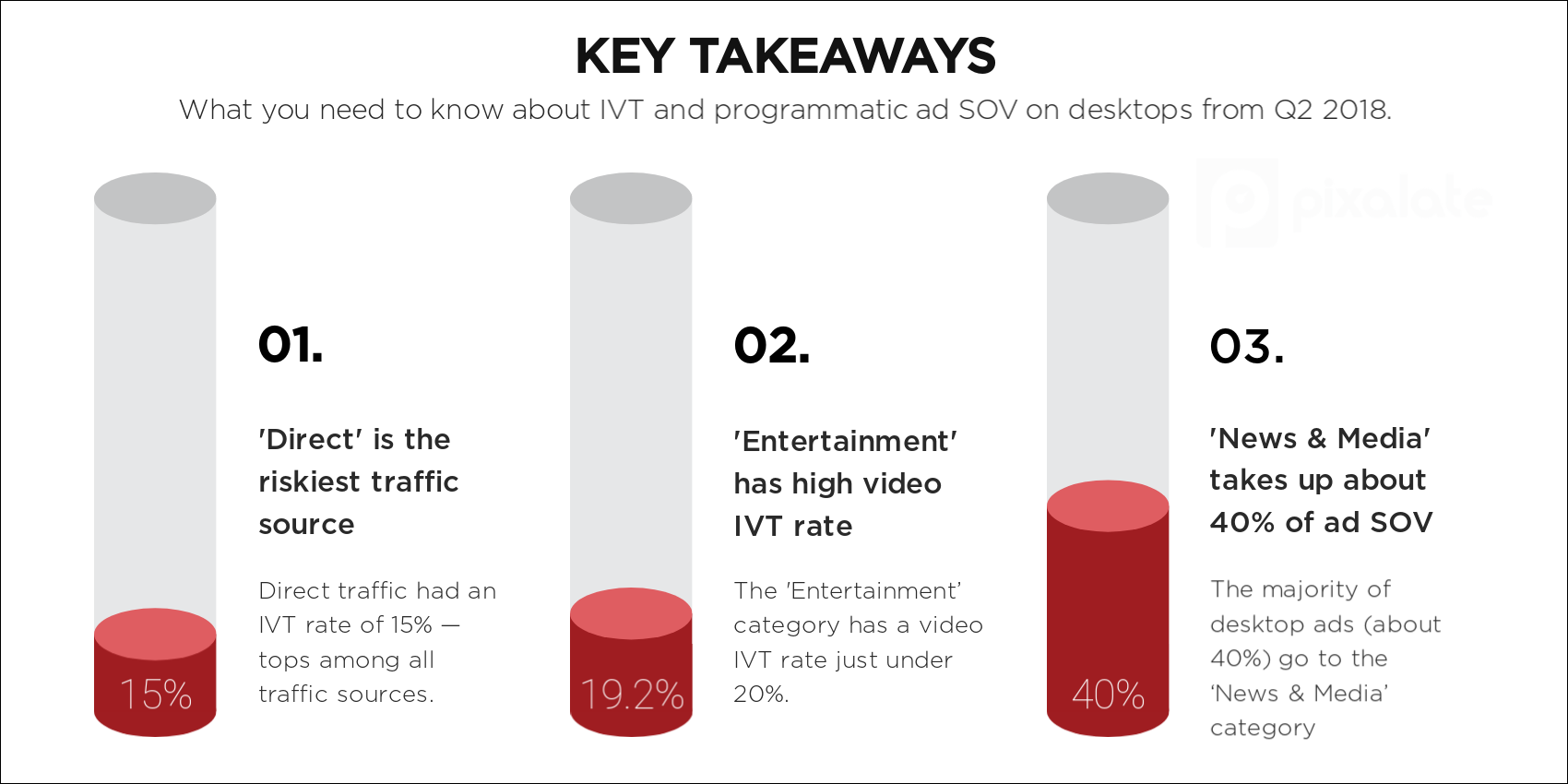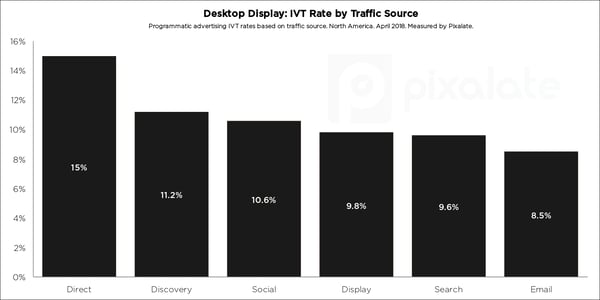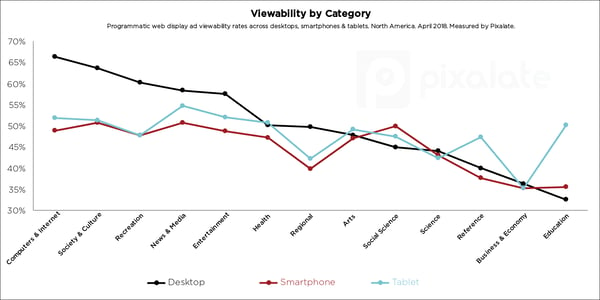
This week's review of ad fraud and quality in the digital advertising space.

Pixalate’s latest measurements show that between 10%-15% of programmatic desktop advertising is invalid traffic. While this rate is lower than it was when programmatic advertising rose to prominence a decade ago, fraudsters are still siphoning off a significant portion of digital ad spend. The initial efforts made by publishers and platforms need to be strengthened as fraudsters continue to find new ways to exploit desktop.

Pixalate continued its analysis on the state of traffic quality in programmatic in Q2 2018 with a look at viewability rates across desktops, smartphones, and tablets across North America. Pixalate examined display ad viewability rates, as well as ad share of voice (“SOV”), across common publisher categories to compile this research. Invalid traffic (“IVT”) was removed prior to measurement.

"Data breaches are proliferating at a time when marketers are becoming increasingly reliant on user data, and this has left many CMOs in agony," wrote eMarketer in response this week's news that hackers stole some Reddit user data from 2007. "In a May survey of 1,000 senior-level marketers and CMOs worldwide conducted by Dentsu Aegis Network, about three in 10 respondents said that a data breach was the strategic risk that they’ll worry about the most over the next few years."

Per Marketing Dive, citing research from MediaRadar, "Amazon is the biggest spender of programmatic advertising, alone accounting for 10% of the spend of the top 50 programmatic advertisers in Q1 2018." The article added: "Amazon spent 1.5x more than Microsoft, the next-biggest spender."

AdExchanger walked in the ad tech industry through the need-to-knows of blockchain. "Blockchain solutions for ad tech typically seek to either reconcile campaign results or facilitate supply chain payments," the article noted.
Sign up for our blog to stay updated with new stats, trends, and analysis of digital ad fraud.
*By entering your email address and clicking Subscribe, you are agreeing to our Terms of Use and Privacy Policy.
These Stories on Weekly Recaps
*By entering your email address and clicking Subscribe, you are agreeing to our Terms of Use and Privacy Policy.

Disclaimer: The content of this page reflects Pixalate’s opinions with respect to the factors that Pixalate believes can be useful to the digital media industry. Any proprietary data shared is grounded in Pixalate’s proprietary technology and analytics, which Pixalate is continuously evaluating and updating. Any references to outside sources should not be construed as endorsements. Pixalate’s opinions are just that - opinion, not facts or guarantees.
Per the MRC, “'Fraud' is not intended to represent fraud as defined in various laws, statutes and ordinances or as conventionally used in U.S. Court or other legal proceedings, but rather a custom definition strictly for advertising measurement purposes. Also per the MRC, “‘Invalid Traffic’ is defined generally as traffic that does not meet certain ad serving quality or completeness criteria, or otherwise does not represent legitimate ad traffic that should be included in measurement counts. Among the reasons why ad traffic may be deemed invalid is it is a result of non-human traffic (spiders, bots, etc.), or activity designed to produce fraudulent traffic.”

